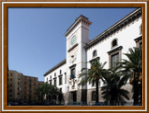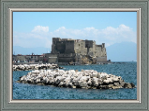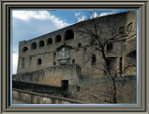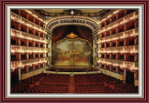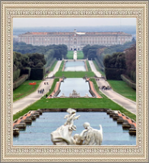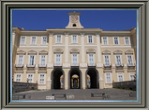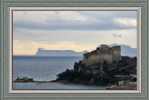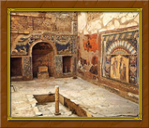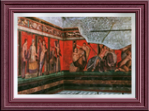Monuments - RNA - Residenze Napoli Ateliers
Main menu
- Home
- Apartments
- Prices
- Availability
-
Naples Art
- The works
-
Where we are
- A little history
- The life of Celentano
- How find us
- Contacts
- Links
- Naples News
Monuments
Castel Capuano, after the Castel dell 'Ovo, the oldest castle in Naples. Of norman source, is situated at the mouth of the way of the courts. It owes its name to the fact of being located close to Porta Capuana, which opens on the road leading to the ancient Capua.
New Castle, better known as Maschio Angoino, is a medieval castle and Renaissance, as well as a symbol of the city of Naples. The castle dominates the spectacular Piazza Municipio and houses the Museum of Naples, to which they belong to the Palatine Chapel and museum visits in the first and second floor.
Castel Ovo is the oldest castle in the city of Naples and is one of the elements that stand out the most famous scene in the Gulf. Its name derives from an ancient legend that the Roman poet Virgil -
St. Elmo Castle dominates the city. The perched position, the plant form of six-
The Teatro San Carlo is one of the oldest opera houses in the world. The theater was built in 1737 by order of Charles I of Bourbon, on the former site of St. Bartholomew, and was inaugurated on the day of St. Charles of the same year.
The Royal Palace de Caserta was built by King Charles III of Bourbon in 1752-
The Royal Palace of Portici is a historic mansion built by King Charles III, as a royal palace for the dynasty of the Bourbons of Naples, before the construction of the most impressive Royal Palace of Caserta. It is precisely located in Portici, near Naples town, in a large park with a landscaped garden and an amphitheater.
The Aragonese Castle of Baia located in an area of considerable strategic importance, was built on a promontory on the east naturally defended by a high rocky precipice overlooking the sea, and west by the deep depression on the calderas of two volcanoes called "Funds the Bay ", with the addition of walls and moats, drawbridges, the castle was virtually impregnable.
Excavations of Herculaneum: A fascinating journey into the city, according to legend, was founded by Hercules, and that he was called to reconstruct the story to its tragic end.
The Archaeological Excavations at Pompei have yielded the remains of the ancient city of Pompeii, near the hill of Civita, buried under ash and lapilli cultured in 79 dall'eruzionedel Vesuvius, along with Herculaneum, Stabiae and Oplontis.
The Archaeological Excavations of Stabiae have yielded the remains of the ancient city of Stabiae, in today's Castellammare, near the hill of Varano, plus a set of buildings that were part of his ager.
The Archaeological Excavations of Oplonti show archaeological finds belonging to the ancient city of Pompeii or suburban area, Oplontis, buried along with Pompeii, Herculaneum and Stabiae after the eruption of Vesuvius in 79 AD Today the archaeological site is located in the center of modern town of Torre Annunziata, and includes a villa of otium called "Poppea" and a country house called "B or Crassius Lucius Tertius".
